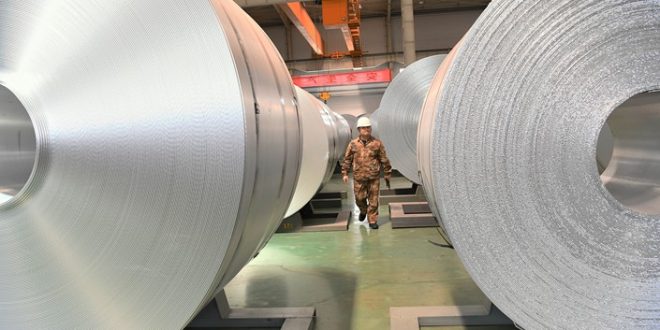Rising power costs in Europe, almost wholly down to the cost of natural gas, resulted in reduced output at Europe’s largest aluminum smelter, Aluminium Dunkerque Industries France. Losses there ballooned to €20 million ($22 million) during November, as natural gas prices quadrupled this year.
Most aluminum smelters operate on long-term power contracts. However, spot prices do impact costs for many mills, either with contracts linked to spot prices or when contracts come up for periodic adjustment when the prevailing spot price comes into play.
So, it is hardly surprising that the Dunkerque smelter is but the tip of the power crunch-induced iceberg.
Alcoa announces production halt in Spain
In a separate post, Bloomberg reported Alcoa Corp. is set to halt primary aluminum production at its plant in Spain, Europe’s second-largest aluminium plant, for two years, depriving the European market of valuable supplies at a time of near-record demand. Bloomberg reports Alcoa’s advice that the smelter will continue to supply strategic clients in the pharmaceutical and food industries by remelting aluminum, while maximizing billet production of 65,000 tons per year and producing more than 25,000 tons of aluminum slab, but no primary smelting of virgin ingot.
Nor are the aforementioned smelters alone in announcing closures.
Romania’s Alro smelter, feed mill to one of Europe’s largest integrated operations, announced last week it has cut primary production by 60% already due to unsustainable energy costs. Furthermore, it could totally closing the smelter in the new year until power supply and costs improve.
Resurgent delivery premiums
After easing all fall, European physical delivery premiums are now back on the rise.
Cash-settled premiums for duty-paid aluminium in Europe were last at $330.83 per ton on the London Metal Exchange. That marked an increase of about 19% since the start of December.
Yet higher delivery premiums are failing to lure more metal onto the LME. Inventory levels remain depleted, with levels up a little from early December but still below 1 million tons, a figure not seen since late 2019.
China is in, if anything, a materially worse situation than Europe.
Most aluminum plants, especially those using in-house generated power, suffered losses from late October to November due to surging electricity costs and high prices for raw and auxiliary materials, SMM reports. The shortage of thermal coal caused the costs of thermal power to soar. Domestic aluminum prices remained depressed in November, which further aggravated smelters’ losses. Furthermore, they dissuaded production while promoting imports and exchange drawdowns.
Integrated mills in the tight European market will be faring better than those relying on external ingot or slab supply, for obvious reasons. The loss of so much primary capacity in Europe does not fare well for downstream mills and can be expected to support prices for both ingot and billets in 2022, in addition to conversion premiums, as downstream mills compete for primary metal supply.

 Iran Energy News Oil, Gas, Petrochemical and Energy Field Specialized Channel
Iran Energy News Oil, Gas, Petrochemical and Energy Field Specialized Channel



